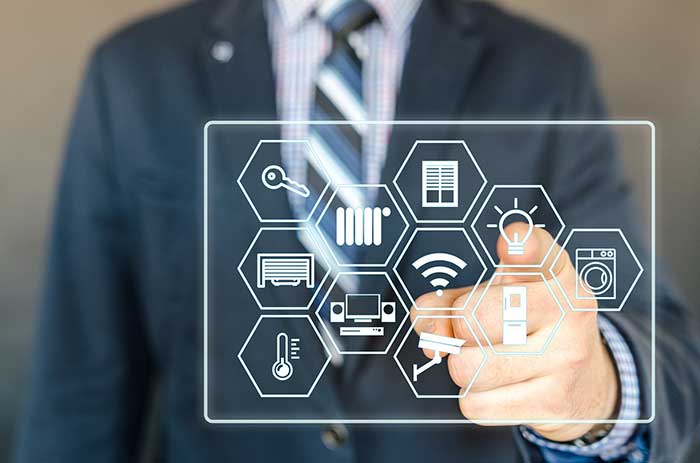
Best Energy-Efficient Cooling Systems for Modern Tech Spaces
Share
In the world of technology, where innovation is the heartbeat of progress, the demand for sustainable and energy-efficient cooling systems has never been more critical. As tech professionals and enthusiasts, the pursuit of efficiency and sustainability is not just a trend but a necessity. The drive towards greener solutions is reshaping how we approach cooling systems in modern tech environments. The best energy-efficient cooling systems are designed to optimize energy consumption while maintaining optimal performance, ensuring that tech spaces remain cool without compromising on environmental impact.
With rising global temperatures and increasing energy costs, the need for smart cooling solutions is pressing. These systems are not only pivotal in reducing carbon footprints but also in cutting down on operational costs. Whether you're managing a data center or crafting the next groundbreaking software in a small office, integrating these systems can make a significant difference.

Why Energy Efficiency Matters
Energy efficiency is not just about saving money; it's about preserving our planet for future generations. The technology sector, known for its rapid growth and resource consumption, has a unique responsibility to lead by example. By adopting energy-efficient cooling systems, tech professionals can showcase their commitment to sustainability while enhancing their operational capabilities.
Implementing such systems helps in reducing greenhouse gas emissions, conserving natural resources, and improving air quality. The ripple effects of these changes contribute to a healthier environment and a more sustainable future.
Top Technologies in Energy-Efficient Cooling
1. Smart Thermostats
Smart thermostats are a cornerstone of modern cooling efficiency. These devices learn from your habits and adjust the temperature accordingly, ensuring that energy is not wasted. For tech spaces with varying occupancy, smart thermostats are an excellent way to maintain comfort while optimizing energy use. Learn more about smart devices in tech spaces by visiting smart devices optimization.
2. Variable Refrigerant Flow (VRF) Systems
VRF systems are known for their precision and flexibility. By allowing for individual room control, they ensure that energy is only used where it's needed. This system adjusts the refrigerant flow to match the cooling needs of each space, making it highly efficient for tech environments.
3. Geothermal Cooling
Geothermal systems tap into the earth's natural temperature-regulating abilities. By using the ground as a heat sink, these systems provide a sustainable way to cool tech facilities. The initial investment is higher, but the long-term energy savings and environmental benefits are substantial. For more eco-friendly solutions, visit eco-friendly home automation.
4. Evaporative Cooling
Evaporative cooling is an ancient technique that has found its place in modern technology. By harnessing the natural process of evaporation, these systems can significantly reduce temperatures without the high energy costs associated with traditional air conditioning.
Integrating Cooling Systems in Tech Environments
The integration of energy-efficient cooling systems in tech environments requires careful planning and consideration. It's essential to assess the specific needs of your space and choose a system that aligns with your operational goals. Factors such as technology usage, space configuration, and budget all play a role in determining the best solution.
For those managing data centers, the stakes are even higher. Efficient cooling is critical to prevent overheating and ensure the longevity of equipment. In such settings, precision cooling solutions like VRF systems or advanced air management techniques can be pivotal.
Looking Ahead: The Future of Cooling Technology
As technology continues to evolve, so too will the cooling systems that support it. Future advancements are likely to focus on further reducing energy consumption while enhancing cooling capabilities. Innovations such as AI-driven climate control and advanced material science are on the horizon, promising even greater efficiency.
For tech professionals, staying ahead of these trends is crucial. Embracing innovative cooling solutions not only supports environmental goals but also positions companies as leaders in sustainability. For further insights into automated cooling systems, visit automated cooling systems.

FAQs on Energy-Efficient Cooling Systems
1. What are the benefits of using energy-efficient cooling systems?
Energy-efficient cooling systems offer numerous benefits, including reduced energy consumption, lower utility bills, decreased carbon footprint, and improved environmental sustainability.
2. How do smart thermostats contribute to energy efficiency?
Smart thermostats learn from user behavior and adjust temperatures accordingly, optimizing energy use without sacrificing comfort. They enable remote control and scheduling, further enhancing efficiency.
3. Are geothermal cooling systems worth the investment?
While geothermal systems require a higher initial investment, they offer substantial long-term savings and environmental benefits, making them a worthwhile consideration for tech spaces prioritizing sustainability.
For further reading on green technologies, explore green construction technologies.
